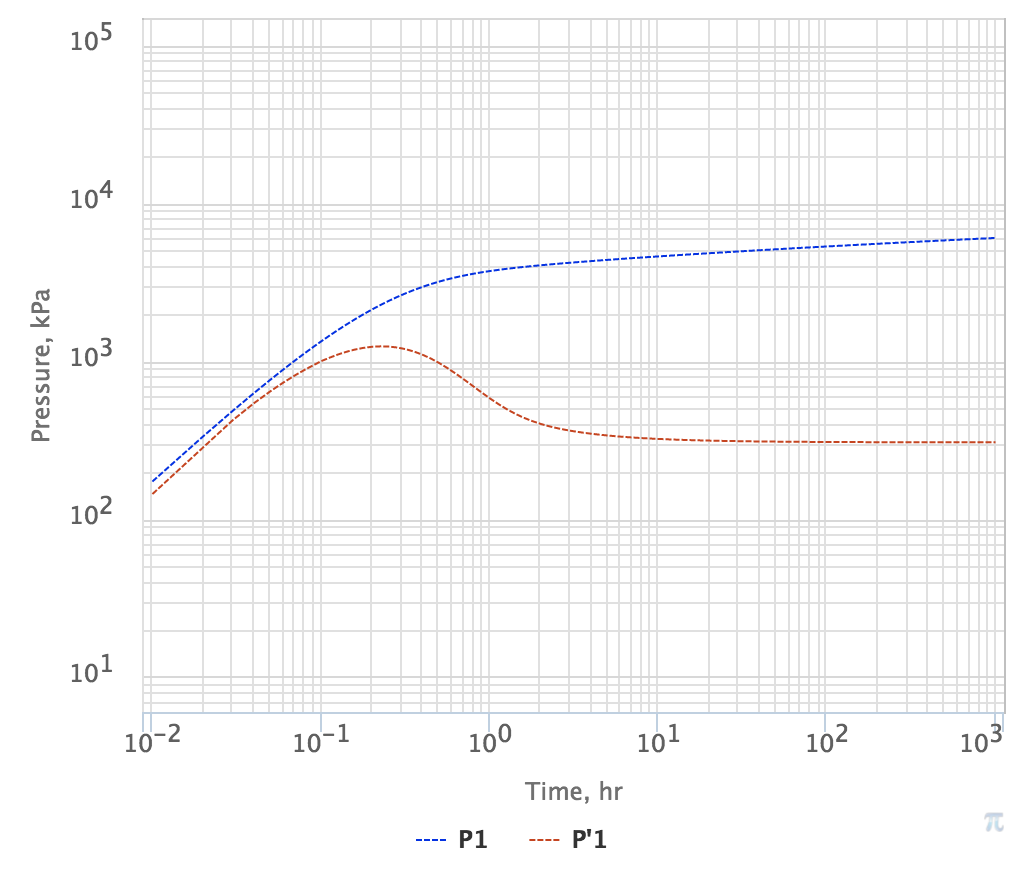Motivation
In many practical cases the reservoir fluid flow created by well is getting aligned with a radial direction towards or away from well.
This type of reservoir fluid flow is called radial fluid flow and corresponding pressure diffusion models provide a diagnostic basis for pressure-rate base reservoir flow analysis.
The radial flow can be infinite acting or boundary dominated or transiting from one to another.
Although the actual reservoir fluid flow may not have an axial symmetry around the well-reservoir contact or around reservoir inhomogeneities (like boundary and faults and composite areas) but still in many practical cases the reservoir flow tends to become radial after some time which makes a Radial Flow Pressure Diffusion @model (in its general form or in particular BVP solution) a popular diagnostic tool.
Inputs & Outputs
| Inputs | Outputs | ||
|---|---|---|---|
q_t | total sandface rate | p(t,r) | reservoir pressure |
{p_i} | initial formation pressure | {p_{wf}(t)} | well bottomhole pressure |
\sigma | transmissibility, \sigma = \frac{k \, h}{\mu} | ||
\chi | pressure diffusivity, \chi = \frac{k}{\mu} \, \frac{1}{\phi \, c_t} | ||
S | skin-factor | ||
r_w | wellbore radius | ||
r_e | drainage radius (could be infinite) | ||
Physical Model
| Radial fluid flow | Homogenous reservoir | Infinite boundary | Zero wellbore radius | Slightly compressible fluid flow | Constant rate | Constant skin |
|---|---|---|---|---|---|---|
p(t, {\bf r}) \rightarrow p(t, r) {\bf r} \in ℝ^2 = \{ x, y\} | M(r, p)=M =\rm const \phi(r, p)=\phi =\rm const h(r)=h =\rm const c_r(r)=c_r =\rm const | r \rightarrow \infty | r_w = 0 | c_t(r,p) = \rm const | q_t = \rm const | S = \rm const |
Mathematical Model
Applications
Equations (8) and (9) show how the basic diffusion model parameters impact the pressure response while other diffusion parameters are encoded in F function and play important methodological role as they are used in many algorithms and express-methods of Pressure Testing.
See Also
Physics / Mechanics / Continuum mechanics / Fluid Mechanics / Fluid Dynamics / Radial fluid flow / Pressure diffusion / Pressure Diffusion @model
Petroleum Industry / Upstream / Subsurface E&P Disciplines / Well Testing / Pressure Testing
[ Well & Reservoir Surveillance ]
[ Line Source Solution (LSS) @model ] [ Linear Flow Pressure Diffusion @model ]
